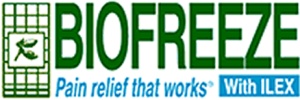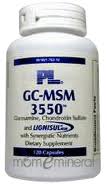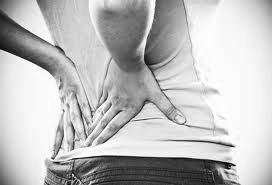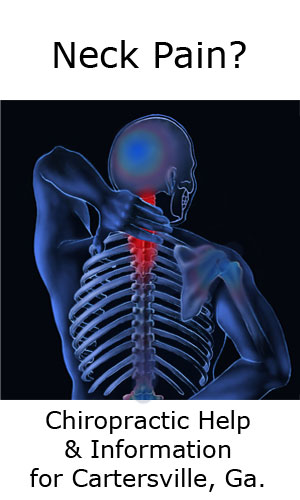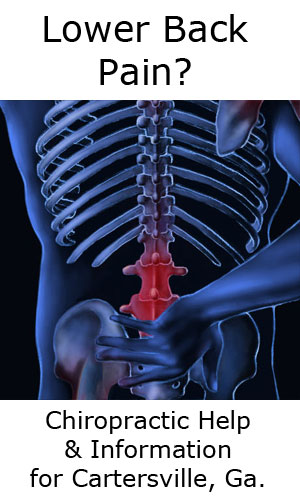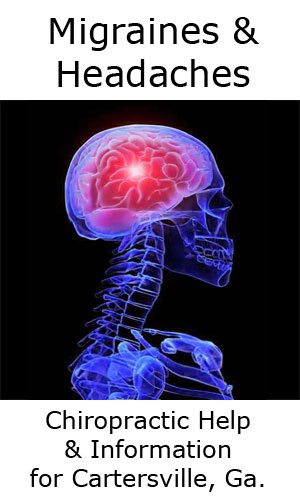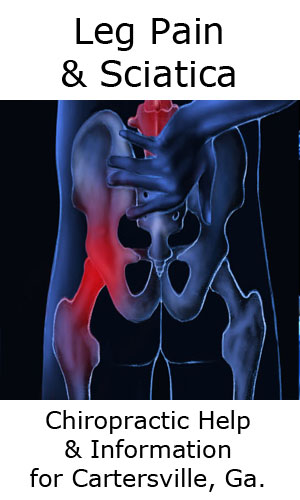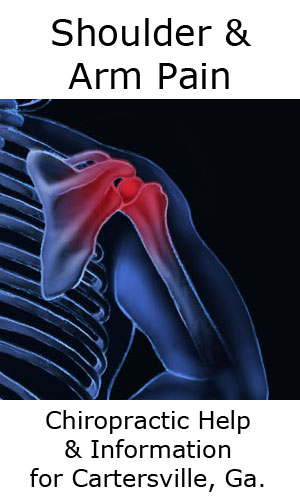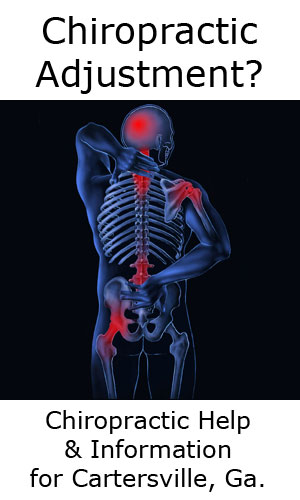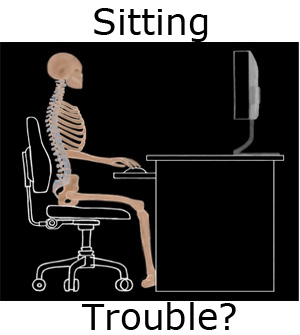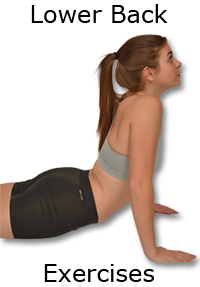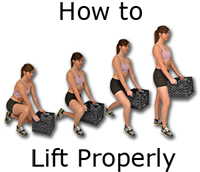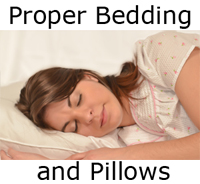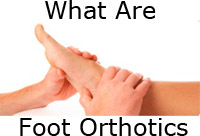Thinking of Back Surgery?
Maybe you are frustrated because you have tried various medical treatments, medications, shots and therapies and your still in pain ......your back problem just won't go away. You are begining to think of surgery. Lets put the brakes on, and take a look at the research and statistics surrounding back surgery so you can make an informed decision. Information is power and we want you to be an informed patient.
STATISTICS
60-80% of people, at some time during their life, will develop a back problem
At any given time in the United States, 15-20% of the people have back pain, that equals to approximately 54 million people right now!
Greater than 50% of individuals with no back pain show bulging or herniated disc's on MRI
Average age for back sugery is 41
Chiropractic costs 50% that of Medical care.
According to a Consumer Reports Health Rating Survey concerning BACK PAIN:
- 46% said it interfered with their sleep
- 31% said it limited their efforts to loose weight
- 24% said it interfered with their sex life
- 88% said it returned throughout the year
- 50% said it severly limited their daily routine for a week or longer
The same survey revealed the percentage of people satisfied with both their treatment and physician type:
- Chiropractor 59%
- Physical Therapist 55%
- Acupuncturist 53%
- Physician-Specialist 44%
- Physician-Family Doctor 34%
Between 1979 and 1990 lumbar spine surgery increased:
- Overall by 33%
- Lumbar Fusions by 60%
- Cervical Fusions by 70%
- Disc Surgeries - in Men by 40%, in Women by 21%
SPINE 1994;(10):1117-1124
DISABILITY:
There are approximately currently 5.2 million Americans "partially disabled" with a lower back problem
There are approximately currently 2.6 million Americans "permanently disabled" from a lower back problem
Lower back pain is the #1 cause of disability in persons under 45 years old
Lower back pain is the #3 cause of disability in persons under 45 years old
Disabled = physically impaired, crippled, injured or incapacitated.
Editors Note
With this high an incidence of disability related back problems, we should stop, think and consider if the present medical approach to back pain is appropriate or effective?
COST:
Approximatley 1,175,000 back surgeries are performed each year
Estimated cost for back related disorders in the United States is $50-$100 BILLION PER YEAR
It is the most expensive ailment treated between the ages of 20-50
Lumbar Fusions are "Big Business" (approximately $40,000 per surgery)
Between 1992 and 2003 spending for Lumbar Fusions increased more than 500%, going from $75 million to $482 million
Chiropractice care is 2.9% of the total cost for back care in the United States
EFFECTIVENESS: 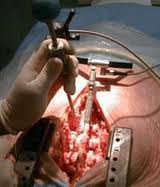
"DISC SURGERY DOES NOT APPEAR TO RETURN PATIENTS TO WORK ANY FASTER OR PREVENT LONG TERM DISABILITY ANY MORE EFFECTIVELY THAN "NON-OPERATIVE TREATMENTS."
Back Letter 1994;9(7):73-79
A Washington State Workers Compensation study revealed that between 1996 and 2001 Lumbar Fusion Surgeries increased from 3.6% to 58% with the result of "INCREASED COMPLICATION RISKS AND NO IMPROVEMENT IN DISABILITY RATES OR RE-OPERATION RATES."
Two years after surgery:
- 64% were disabled
- 22% required another surgery
- 12% had additional complications
SPINE 2006;31(23):2715-2713
466 patients with Sciatica from a herniated disc, were treated with conventional medical care. The success rate one year later only averaged between 49% and 58%.
European Spine Journal 2011;20(10):1669-1675
Out of 600 Workers Compensaton patients who had a single lower back surgery, 71% had not returned back to work one year later.
Out of 400 Workers Compensation patients who had multiple lower back surgeries, 95% had not returned back to work 4 years later
SURGICAL NEUROLOGY 2000;54(2):101-106

9 out of 11 ruptured discs that leaked material into the spinal canal, ...... the disc material actually shrunk or dried up 50%-100% .....WITHOUT SURGERY
SPINE 15(7)
In patients who had loss of muscle strength (motor function) as the result of a herniated disc, the return of the muscle strength (motor function) was better when treated non-surgically than surgically
Spine 27(13)
In 50% of patients with sciatica coming from a herniated disc, the pain will go away spontaneously, with no treatment at all, within 4-6 weeks
Essentials of the Spine, NY; Raven Press, 1995:4-5
ONLY 5-10% OF SYMPTOMATIC LUMBAR DISC PATIENTS REQUIRE SURGERY
AMERICAN FAMILY PHYSICIAN 1993;April:1057-1058
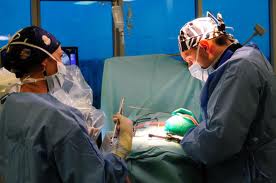
FAILED BACK SURGERY SYNDROME: A percentage of individuals will develop chronic, on-going lower back and/or leg pain after spinal surgery. This is termed FBSS (Failed Back Surgery Syndrome). It is difficult to estimate the incidence of FBSS, however based on different studies it varies between:
10-40%
SURG NEUROL 1998 March;49(3):263-368
Are things getting Better? According to a 2009 article in The Journal of the American Board of Family Medicine the answer is an overwhelming no. According to the article we have experienced a:
- 620% increase in Epidural Sterod injections
- 423% increase in opioid prescription pain relievers
- 307% increase in Lumbar Spine MRI's
- 231% increase in specialized low back injections
- 220% increase in Spinal Fusion rates
With all this increase in the utilization of medical services for lower back pain,
you would think that we are seeing really good results .....RIGHT?
WRONG! ..........According to the article:
- Patients reported functional limitations, work limitations and social limitations that were worse in 2005 then when the article was written in 1997
- Disability from musculoskeletal disorders proved to be on the rise ......they were not falling! From 20.6% in 1996 to 25.4% in 2005
Journal of the American Board of Family Medicine 2009; vol.22 no.1, 62-68
The United States has the highest rate of low back surgery of 12 Western nations. Chances of having lower back surgery are 35% greater than in Sweeden, England, Scottland, Canada and many other industrailized countries.
SPINE 1994;19:1117-1124
FUSIONS:
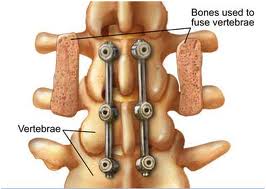
FUSION DOUBLES SECOND SURGERY RATE - A study involving 388 Workers' Compensation cases revealed that 2 years post-fusion:
- 68% were work disabled
- 23% required further spinal surgery
- Fusions done with instrumentation (metal rods, screws and plates) doubled the risk of a second surgery
SPINE 1994;19(17)1897-1904
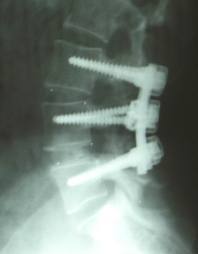
41% of patients receving a spinal fusion developed "Transitional Segment Alterations" which means the segment directly above the fusion couldn't hold up to the additional strain and developed instability, degenerative changes and disc problems. 20% of these required a second fusion surgery to extend the length of the fusion.
Journal of Spinal Disorders and Techniques Vol. 16 No. 4, 2003
CHIROPRACTIC: The Good News!
When patients were treated non-medically, using Chiropractors as the Primary Care Physicians, the number of procedures and the cost of health care was dramatically reduced.
- 60.2% less Hospital Admissions
- 59.0% less hospital days
- 62.0% less outpatient surgeries and procedures
- 85% less pharmaceutical costs
JMPT 2004 (June);27(5):336-347
CONCERNING SURGERY, THE ONLY CLEAR CUT INDICATOR FOR LOW BACK SURGERY IS "PROGRESSIVE LOSS OF MOTOR FUNCTION." WHAT THIS MEANS IS THAT IN THE AREA OF THE INJURED DISC THERE IS A NERVE SO BADLY TRAPPED AND COMPRESSED THAT IT IS STARTING TO BECOME PERMANENTLY DAMAGED. IF THIS CANNOT BE STOPPED IN A REASONABLE PERIOD OF TIME, (APPROXIMATELY 30 DAYS OF CONSERVATIVE TREATMENT) THEN SURGERY TO RELIEVE THE TRAPPED NERVE IS INDICATED. SURGERY FOR ANY OTHER REASON, INCLUDING PAIN AND NUMBNESS, BECOMES RISKY AND SUBJECT TO THE POTENTIAL COMPLICATIONS AND ADVERSE EFFECTS LISTED IN THE PREVIOUS RESEARCH ARTICLES.
If you or a loved one are experiencing a Lower Back or Neck problem that you think requires surgery, and would like a second opinion, contact our office to schedule a no charge, no obligation consultation with the doctor or email Dr. Garber a question concerning your case for a quick response.
We are here to help!
Garber Chiropractic Care Center
In Cartersville Ga.
(770)386-7707
Chiropractic Care and Pain Relief for Cartersville, Acworth, Taylorsville, Kingston, White, Emerson, and Euharlee Georgia
What is Spinal Stenosis?
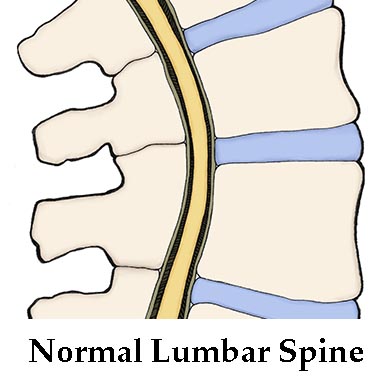
Modern medicine has enabled us to live longer than ever. At the turn of the century the average life expectancy was 49.2 years, it is now 77.5 years. If you have a few years under your belt, when you look in the mirror, things don't look exactly like they used to. You can see the effects of aging on your body. The hair is graying, the skin is wrinkling and good old gravity has caused many body parts to sag southward. What you see on the outside is also happening on the inside, the muscles are becoming smaller and weaker, the eyesight is dimming and the JOINTS ARE DEGENERATING or thinning out. This includes the spine or spinal joints.
For example the disc's of the spine make up 25% of the total length of the spine. As we age, the disc's thin out and we lose height, up to several inches if we have great length of years. Other changes to the inner dimensions of the vertebrae also take place and this is termed SPINAL STENOSIS.
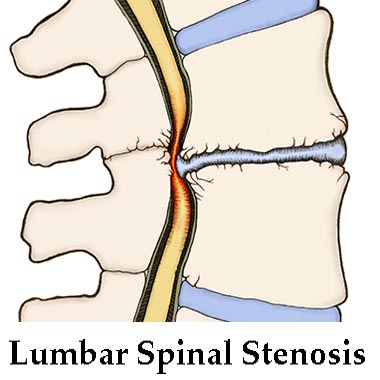 Spinal Stenosis by definition is: The narrowing of the spaces in the spine resulting in compression of the Spinal Cord or Spinal Nerves. Spinal Stenosis is the long term result of spinal degeneration (wear and tear) or arthritis and is typically associated with disc degeneration and a loss of disc height. It is primarily a condition of the elderly. The diagram to the left, demonstrates the impact that spinal stenosis has on the nerve system which in essence is to "choke it out."
Spinal Stenosis by definition is: The narrowing of the spaces in the spine resulting in compression of the Spinal Cord or Spinal Nerves. Spinal Stenosis is the long term result of spinal degeneration (wear and tear) or arthritis and is typically associated with disc degeneration and a loss of disc height. It is primarily a condition of the elderly. The diagram to the left, demonstrates the impact that spinal stenosis has on the nerve system which in essence is to "choke it out."
The lumbar or low back spinal cord above in yellow is normal, while to the left the spinal cord is being squeezed and compressed as a result of long term wear and tear to the disc and boney structures of the spine. Because the spinal cord is the main "pipeline" for the flow of nerve energy coming down from the brain and out to all parts of the body, spinal stenosis reduces the flow, causing pain in the back and neck and weakness in the arms and legs.
Let's look at a top view of the spine where we can get another perspective on how Spinal Stenosis effects the spine and nerve system. You will notice in the diagram below an area called the "Spinal Canal." This is the passageway that the spinal cord runs through. On the left it is clear and open, on the right you can see bulky yellow soft tissue projections squeezing and compressing the spinal cord. Also seen on the right is arthritic overgrowth of the bone which is squeezing closed the spinal canal and choking the spinal cord ...this is Spinal Stenosis.
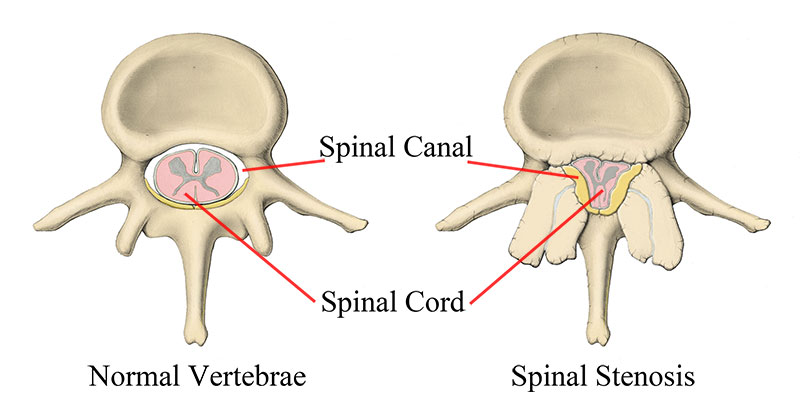
Symptoms of Lumbar (low back) Spinal Stenosis:
- Back pain, either in the center or to the right or left
- Leg/buttocks/thigh - pain, weakness, numbness and deep ache in one or both combined
- Increased back pain, leg pain, weakness and numbness with prolonged standing or walking
- Relief of back pain, leg pain, weakness and numbness with leaning forward on something or sitting
- General weakness of the legs to hold up the body
Symptoms of Cervical (neck) Spinal Stenosis:
- Neck pain, either in the center or to the right or left
- Arm pain, weakness, numbness and deep ache in the right, left or both arms combined
- Increased neck pain, arm pain, weakness and numbness with prolonged backward neck or head movement
- Relief of neck pain, arm pain, weakness and numbness with head or neck forward
- General weakness of the arms to perform simple and repetitive tasks
When treated properly, Spinal Stenosis can respond favorably to Chiropractic care. One study showed that lumbar spinal stenosis patients improved by 76% and disability improved by 73% in 57 patients treated with "Cox Flexion Distraction" which is a method used in this office. Because Spinal Stenosis is related to long term degenerative changes, it is not possible to get 100% relief. Upwards of 50% relief of symptoms is considered an excellent outcome. The results you will achieve can only be determined through a 30 day course of care. The vast majority of our patients are grateful for the relief we can give them, however not every case responds. Remember, you did not get this way overnight.
If you or a loved one are experiencing a Lower Back or Neck problem that is related to Spinal Stenosis, and would like to see if we can help, contact our office to schedule a no charge, no obligation consultation with the doctor or email Dr. Garber a question concerning your case for a quick response.
We are here to help!
Garber Chiropractic Care Center
In Cartersville Ga.
(770)386-7707
Chiropractic Care and Pain Relief for Cartersville, Acworth, Taylorsville, Kingston, White, Emerson, and Euharlee Georgia
What is Degenerative Disc Disease?
Degenerative Disc Disease is really not a disease but a general term used to describe the aging and "wear and tear" process of the disc. Just as the hair grays and the skin wrinkles, the internal structures of the body are also aging. The rate of disc degeneration or "wear and tear' is also influenced by trauma, like auto, sports and work related accidents which speed up this aging processes in the regions of the spine that were traumatized or injured.
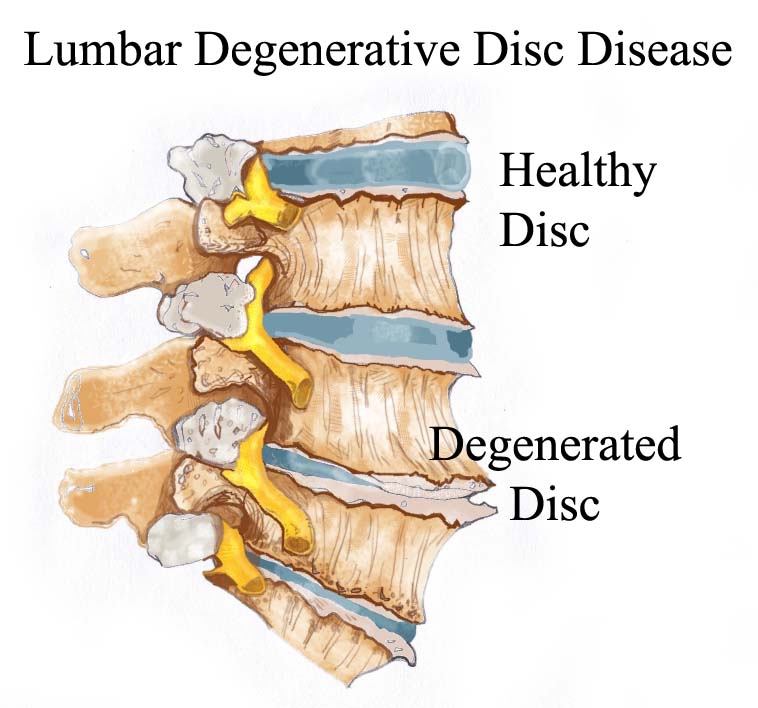
Degenerative Disc Disease is also influenced by the position the disc has in the spine, the common stress zones being the lower back, and the lower regions of the neck. As all the disc's in the spine are gradually aging, the injured discs and the disc's in the "stress zones" go through accelerated aging or wear and tear.
To the right is a diagram of the last few vertebra in the low back and their disc's. The top disc is normal, however as we go progressively downward we have greater degrees of Degenerative Disc Disease, with the disc on the bottom being the worst. With Degenerative Disc Disease and its end result, disc thinning, the vertebrae come closer together creating excessive wear and tear and bone spur formation which is evident in the last two vertebrae in the diagram.
The pictures below are actual X-rays of Degenerative Disc Disease. To the left is the lower back, to the right is the neck. The neck has very advanced or severe Degenerative Disc Disease at almost every level. You can barely make out any disc spaces between the vertebrae.
The low back, as indicated by the red arrow, has advanced Degenerative Disc Disease between L5 and S1, that appears as a very thin space between the two segments. These are two good examples of what is frequently found in our elderly patients with lower back and neck complaints.
What Causes Degenerative Disc Disease:
- Injury or trauma, such as car accidents or contact sports
- Natural loss of blood supply to the disc
- Family Tree - strong tendency to pass down the family line (Genetics)
- Cigarette Smoking - damages blood supply to the disc
- Occupational -heavy equipment operators due to vibration, prolonged sitting & heavy lifting
Degenerative Disc Disease can be helped through a combination of Chiropractic adjustments, Cox Flexion Distraction, physical therapy, nutritional supplementation, exercise and appropriate life style changes. There is no cure for advanced Degenerative Disc Disease but it can be managed, controlled with the end result being an improvement in your pain level as well as your quality of life.
If you or a loved one are experiencing a Lower Back or Neck problem that is related to Spinal Stenosis, and would like to see if we can help, contact our office to schedule a no charge, no obligation consultation with the doctor or email Dr. Garber a question concerning your case for a quick response.
We are here to help!
Garber Chiropractic Care Center
In Cartersville Ga.
(770)386-7707
Chiropractic Care and Pain Relief for Cartersville, Acworth, Taylorsville, Kingston, White, Emerson, and Euharlee Georgia
Transitional Lumbosacral Vertebrae
If you have been directed to this area of my website, it is because you have a unique spinal condition called a Transitional Lumbosacral Vertebrae. It is a big and potentially "scary" term, so lets see if we can clear up the mystery behind it. Let's break the word down into its three components:
Transitional - A change in configuration from one state to another
Lumbosacral - The area in the lower back where the last vertebrae of the spine meets the sacrum (pelvis)
Vertebrae - Any one of the bones that make up the spine
A Transitional Lumbosacral Vertebrae is condition that occurs when the last vertebrae in the spine is improperly formed. It creates a situation where the number of vertebrae in the lower back is either increased by one or decreased by one. The normal number of vertebrae in the lower back, or lumbar spine is 5. When a Transitional Lumbosacral Vertebrae is present, you have either 4 lumbar vertebrae, making the spine shorter than usual or 6 lumbar vertebrae making the spine longer than usual.
In addition to changes in the number of vertebrae and the overall length of the spine, the Transitional Lumbosacral Vertebrae is typically malformed. It takes on the structural characteristics of both a vertebrae and the sacrum..... while forming in the womb, it could not make up its mind which one to become so it became a little of both.
The combination of a variation in the number of vertebrae combined with a change in the overall length of the spine on top of having a malformed vertebrae creates unique challenges for this area that typically results in back pain!
General Facts Concerning Transitional Lumbosacral Vertebrae
- It occurs in approximately 6% of the population
- It is a birth defect not something that you caused
- It is recognized as a pre-disposing factor for lower back pain
- It leads to an alteration in the normal movements of the lower back
- 50% of individuals with a Transitional Lumbosacral Vertebrae also have a scoliosis
- The disc under a Transitional Lumbosacral Vertebrae is typically unformed and very thin
Bertolotti's Syndrome - Because of altered spinal movement in the area of a transitional lumbosacral vertebrae, the first normal disc above the transitional lumbosacral vertebrae tends to become overly stressed and ultimately damaged. This can lead to disc herniation along with "Sciatica." When this combination of events occurs it is known as Bertolotti's Syndrome. Simply put, Bertolotti's syndrome is a herniated disc one vertebral segment above a transitional lumbosacral vertebrae that is causing "Sciatica." Bertolotti's syndrome responds favorably to Cox Flexion Distraction, which is designed to effectively treat herniated discs. More information about Cox Flexion Distraction can be found by clicking on the link "Spinal Decompression" on this website.
Transitional Lumbosacral Vertebrae can be effectively treated with Cox Flexion Distraction, a form of traction done by the doctor that helps to separate and mobilize the vertebrae and relieve pressure on the nerve structures reducing the pain coming from this unique spinal malformation. Along with Chiropractic adjustments and physical therapy, this area can be effectively treated and managed to reduce the incidence of future flare-ups. Due to a tendency for the discs and cartilage in the area to be over-stressed and undergo degenerative changes, a nutritional supplementation in the form of a good "Joint Support Formula" can also be helpful in treating Transitional Lumbosacral Vertebrae of the spine.
If you or a loved one are experiencing pain, contact our office to schedule a no charge, no obligation consultation with the doctor or email Dr. Garber a question concerning your case for a quick response.
We are here to help!
Garber Chiropractic Care Center
In Cartersville Ga.
(770) 386-7707
Chiropractic Care and Pain Relief for Cartersville, Acworth, Taylorsville, Kingston, White, Emerson, and Euharlee Georgia
What is Spondylolisthesis?
If you have been directed to this area of my website, it is because you have a unique spinal condition called Spondylolisthesis. It is a big and potentially "scary" term, so let's see if we can clear up the mystery behind it. Lets break the word down into its two components:
Spondylo - means "spine"
listhesis - means "slippage"
A Spondylolisthesis by definition is: "The forward slippage of one vertebrae upon the one beneath it."
How does a spondylolisthesis occur? It occurs as the result of a crack of fracture in the rear portion of the vertebrae known as the "Pars." For this reason, in scientific circles it is referred to as a "pars defect." The cause of the crack or fracture is considered to be related to a traumatic event. There is some evidence to lead us to believe that some of us are more prone to this type of injury than others. It seems to run in the family leading us to believe it may be due to a genetic weakness.
By its nature it has the potential to produce pressure on the local spinal nerves or spinal cord.
The most common area for it to occur is the last or lowest vertebrae of your spine called the 5th lumbar.
Spondylolisthesis is graded according to the degree of slippage on a scale of 1 to 4 with 1 being minimal slippage and 4 being maximum slippage.
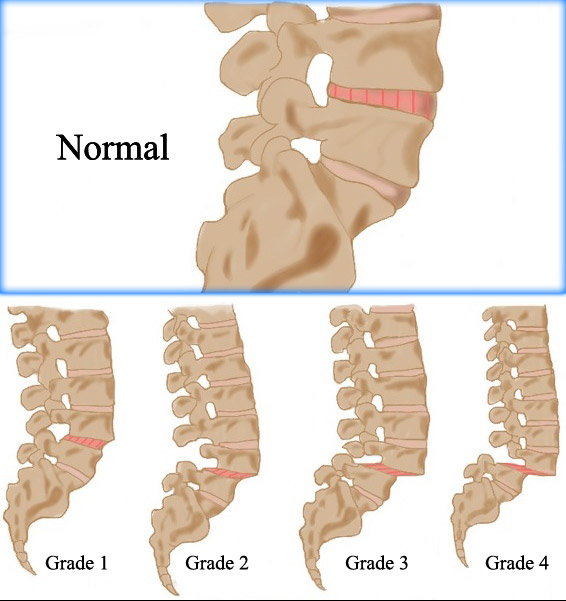
General facts concerning Spondylolisthesis
- Eskimos have a 40-50% occurrence of spondylolisthesis but not that high an incidence of pain with it
- Identified in humans only, never been found in the animal world
- 5-6% of males and 2-3% of females have spondylolisthesis
- Overall 6.2% of the population have a spondylolisthesis
- There is a higher incidence in athletes than there is in the normal population
- Earliest one found was in a 3 month old infant
- There is no known incidence of someone being born with a spondylolisthesis
- Approximately half of the people with spondylolisthesis, remember how it happened (childhood accident or trauma)
- The degree of pain does not correlate with the degree of slippage, meaning that a small slippage may produce a lot of pain and large slippage may produce minimal pain
- The incidence of spondylolisthesis is greater in the family tree than it is in the general population. One out of three family members will have it
- Most people with a spondylolisthesis have no pain with it
- A spondylolisthesis by its nature is unstable, meaning that it is loose and wobbly and not held very well in place compared to a normal vertebra
What is a Spondylolysis? A spondylolysis is a vertebrae that has a "Crack or Fracture" in it, however the vertebrae has not yet slipped.
Approximately 50% of individuals with a spondylolysis will go on to develop a spondylolisthesis. You will notice in the diagram to the right that the arrow is pointing to a "Crack or Fracture" in the back portion of the vertebrae, however the vertebrae itself has not slipped forward.
What is a Degenerative Spondylolisthesis? A degenerative spondylolisthesis does not have a "crack or fracture" in it however due to severe disc degeneration combined with severe arthritic degeneration, the vertebrae has slipped forward upon the one beneath it. This is a condition of the elderly. The diagram below shows two vertebrae that are very close together due to severe disc degeneration. The vertebrae directly above the very thin disc space has slipped slightly forward. This is a typical Degenerative Spondylolisthesis.
Below is a diagram of a Degenerative Spondylolisthesis
Spondylolisthesis can be effectively treated with Chiropractic Adjustments and Cox Flexion Distraction - Protocol II, a form of spinal decompression done by the doctor which helps to gently mobilize the individual vertebrae of the spine allowing them to assume a more appropriate position. Physical therapy in the form of electrical muscle stimulation and core stabilization muscle exercises can also be helpful, both are available at this office. Because of the break down in cartilage in and around a spondylolisthesis, a good nutritional joint formula is also recommended. For detailed treatment information, click on the "Spinal Decompression" link on this web site.
If you or a loved one are experiencing Lower Back Pain due to a spondylolisthesis, contact our office to schedule a no charge, no obligation consultation with the doctor or email Dr. Garber a question concerning your case for a quick response.
We are here to help!
Garber Chiropractic Care Center
In Cartersville Ga.
(770) 386-7707
Chiropractic Care and Pain Relief for Cartersville, Acworth, Taylorsville, Kingston, White, Emerson, and Euharlee Georgia
